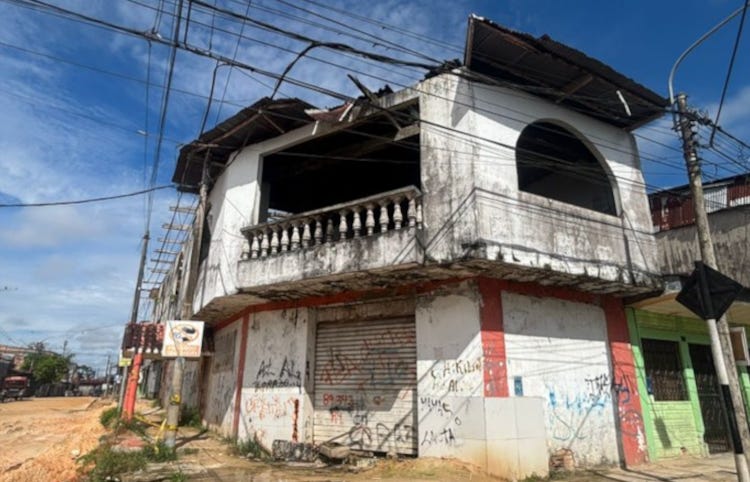Carbon cowboys plan REDD-type projects inside the proposed Atacuari Indigenous Reserve in Peru
The proposed reserve is for Indigenous Peoples living in voluntary isolation.

The Atacuari Indigenous Reserve is a proposed reserve in Ramón Castilla district in the Department of Loreto, in Peru near the border with Colombia. The proposed reserve is for Indigenous Peoples living in voluntary isolation and was requested in June 2020 by the Regional Organisation of Indigenous Peoples of the East (ORPIO).
The following year, the Ministry of Culture allowed an anthropological study by Instituto del Bien Común to start. The Ministry confirmed that there was “reasonable evidence of the existence of Indigenous Peoples in isolation”.
The proposed reserve covers an area of 335,121 hectares, bordering the Yaguas National Park.
Recent investigative reporting, by OjoPúblico journalist Jonathan Hurtado, reveals that two companies own four plots of land covering a total area of almost 64,000 hectares inside the proposed Atacuari Reserve. The two companies are Selva y Hábitat and Perulands. Both companies are interested in generating carbon credits from the forest.
A fifth plot of land covering more than 15,000 hectares, also inside the reserve, is owned by Yoner Caruajulca Villoslada. When OjoPúblico asked him about the plot of land, which is called Valle de los Sueños (Valley of Dreams), he replied that he had bought it “for conservation purposes”. He has had talks with carbon credit developers but has not reached any agreement with them.
Selva y Hábitat and Perulands
According to records accessed by OjoPúblico, Selva y Hábitat was founded in March 2024. The company is managed by an obstetrician called Grace Kristel Iberico Manrique. The company operates in several sectors, including “projects related to carbon credits and biodiversity”.
Grace Iberico is also the commercial manager of Perulands. Her brother, Willy Iberico Manrique is the company’s general manager. The company was founded in September 2022. Perulands operations range from construction to equipment sales.
OjoPúblico visited the headquarters of the two companies headquarters to find out more about their planned carbon projects in the proposed Atacuari Indigenous Reserve.
According to the records, Selva y Hábitat is headquartered on the first floor of a building in Trujillo, the capital of the Department of La Libertad. But no one answered when OjoPúblico visited. Neighbours told OjoPúblico that they had never heard of the company.
Perulands’ address is an abandoned house in Iquitos.

Perulands’ legal representatives, Willy and Grace Kristel Iberico Manrique, did not respond to OjoPúblico’s requests for information.
Yoner Caruajulca Villoslada, who owns the fifth plot inside the proposed Atacuari Indigenous Reserve, told OjoPúblico that he knows the Iberico Manrique siblings but has not had much contact with them.
NHU Planet Perú
Another company, called NHU Planet Perú, has also shown an interest in the forests of Ramón Castilla district. NHU Planet Perú is a mining corporation that carries out exploration, exploitation, and export. The company also develops forest carbon projects.
On 23 January 2025, representatives of NHU Planet Perú took part in a meeting at ORPIO’s office in Iquitos. Representatives of the Federation of Ticuna and Yagua Communities of the Lower Amazon (FECOTYBA) and the Federation of Ticuna and Yagua Native Communities (FECONATIYA) also took part in the meeting.
Moisés Reyes Díaz, Bartolomé Cueva Saénz, and Juan Carlos Borrero Plaza represented NHU Planet Perú.
Also present at the meeting was John Lewis, Managing Director of the carbon trading consulting firm, Terra Global Capital. On LinkedIn, Juan Carlos Borrero Plaza of NHU Planet Perú states that the carbon credit project covers an area of 3 million hectares.
Francisco Hernández Cayetano, president of FECOTYBA, told OjoPúblico that the topic of carbon credits was discussed during the meeting, but “no agreement was reached”.

In a post on Facebook, ORPIO writes that,
The objective of the meeting was to present the scope of the Development Project, highlighting its benefits, challenges and the opportunities it represents for the Indigenous communities. During the meeting, the leaders' concerns were resolved and it was agreed to continue with meetings to strengthen the development of the project.
OjoPúblico visited NHU Planet Perú’s office to ask about the forest carbon project in Peru, but were told that Moisés Reyes Díaz was travelling and that it was “impossible to contact him”.
Bioporio
Yet another company, Bioporio, has an interest in the forest inside the proposed Atacuari Indigenous Reserves.
Bioporio’s website states that the company has offices in Bogotá, Colombia and São Paulo, Brazil. The website gives no information about who is behind the company, except that “a team of local and international experts” is involved.
Bioporio claims to buy plots of land and its activities include “conserving standing forests and restoring deforested areas”. The company claims to have made one land acquisition in Brazil, and to have three land acquisitions in progress. These cover 91,000 hectares in Colombia, and two plots in Peru that cover 17,000 hectares and 45,000 hectares.
But the company’s website provides no concrete information about where the plots of land are, how many people live in the plots of land, whether the carbon projects have been verified and validated (and if so by which organisation), or any details of what activities Bioporio has carried out under these carbon projects.
OjoPúblico reports that in February 2024, representatives of Bioporio held a Zoom call with officials from Peru’s Ministry of Culture. During the meeting, they expressed interest in areas inside the proposed Atacuari Indigenous Reserve.
OjoPúblico requested an interview with Bioporio, but did not receive a response.





There can be no free, prior, informed consent for these projects, because commercialized humans must stay away from uncontacted people, because of the diseases that they carry, one of which is money.